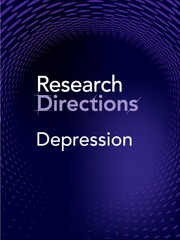Context
There is much conjecture about which social factors underpin an apparent increase in the incidence of psychological distress, depression and other mood disorders, self-harm and suicidal behaviour and presentations for mental health care (in economically-developed countries). These concerns are particularly focused on younger birth cohorts, where the epidemiological evidence appears strongest for a genuine increase in incidence of mood disorders and self-harming behaviours (Twenge et al., Reference Twenge, Cooper, Joiner, Duffy and Binau2019).
While a great deal of media, social and political interest has focused on the potential adverse impacts of social media and new personal technologies, a longer-term concern, and one that has come to greater prominence in our post-pandemic world, is the salience of social disconnection. In economically developed countries, there is considerable evidence of declining participation in major social institutions (Leigh, Reference Leigh2010; Putnam, Reference Putnam2001) such as faith-based groups, workplace-based unions and craft groups, social and other community-based societies and sporting clubs and associations. Rates of volunteering were declining pre-COVID and have not yet returned to pre-pandemic levels.
A wave of recent population-based surveys has emphasized the degree to which loneliness is increasingly reported in economically developed countries (Surkalim et al., Reference Surkalim, Luo, Eres, Gebel, van Buskirk, Bauman and Ding2022). Surprisingly, this appears to be most prominent in younger cohorts (notably in the 20–40 age range) rather than older cohorts (who may be more likely to be living alone or be less physically capable of attending social groups). This very active social discourse has also challenged the legitimacy of the diagnosis and treatment of large numbers of individuals with depressive and other mood disorders. Various countries now recognize that wider population-based social and health policies are required to address the physical and mental health (most notably mood disorder) consequences of loneliness and social disconnection.
The economic, social and mental health consequences of the continuing decline in formal social participation, and increasing loneliness, are now the subject of much multidisciplinary research. The extent to which these impacts are more relevant to children and young people during critical phases of neurobiological and social development is particularly pertinent. The extent to which preservation of social connection as we age has a strong preventive effect for late-onset mood and other degenerative disorders is increasingly recognized.
Social and epidemiological research in low-and-middle-income countries may present quite different perspectives from those studies conducted in Western and more wealthy countries, which also have quite different demographic features. These include the chance that in LMICs, higher proportions of the population are children or youth, fewer people are living in small households, larger numbers of people are living in transgenerational households and higher numbers of people are participating in traditional social institutions or faith-based groups. The relationships between these factors and the onset and course of major anxiety, depression and other mood disorders are deserving of much greater enquiry.
Clearly what is now required is much more informed and multidisciplinary research that addresses the complex factors that are operative in both developed and developing countries. Additionally, new analytic and modelling methods may help to resolve important issues such as the extent to which such social factors are causative and not simply consequences of changes in mental health status (as has recently been demonstrated for the association between employment status and suicide) (Skinner et al., Reference Skinner, Osgood, Occhipinti, Song and Hickie2023).
How to contribute to this Question
If you believe you can contribute to answering this Question with your research outputs, find out how to submit them in the instructions for authors (https://www.cambridge.org/core/journals/research-directions-depression/information/author-instructions/preparing-your-materials). This journal publishes Results, Analyses, Impact papers and additional content such as preprints and ‘grey literature’. Questions will be closed when the editors agree that enough has been published to answer the Question so before submitting, check if this is still an active Question. If it is closed, another relevant Question may be currently open, so do review all the open Questions in your field. For any further queries, check the information pages (https://www.cambridge.org/core/journals/research-directions-depression/information) or contact this email (depression@cambridge.org).
Competing interests
IBH is the Co-Director, Health and Policy at the Brain and Mind Centre (BMC) University of Sydney. The BMC operates early-intervention youth services at Camperdown under contract to Headspace. He is the Chief Scientific Advisor to, and a 3.2% equity shareholder in, InnoWell Pty Ltd, which aims to transform mental health services through the use of innovative technologies. JO is both Head of Systems Modelling, Simulation & Data Science, and Co-Director of the Mental Wealth Initiative at the University of Sydney’s Brain and Mind Centre. She is also Managing Director of Computer Simulation & Advanced Research Technologies (CSART).






